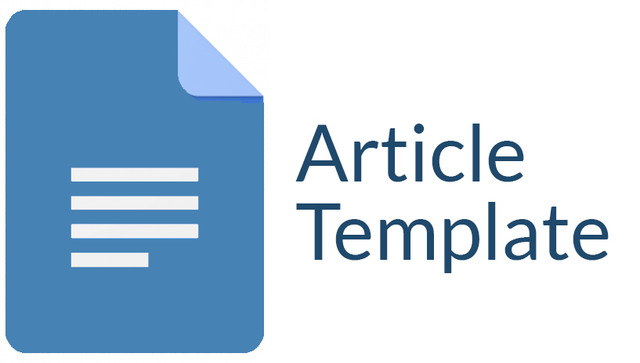Health Education Isi Piringku Terhadap Perilaku Ibu dalam Pemenuhan Nutrisi Pada Anak Pra Sekolah (3-5 Tahun) Di RA Al-Fajar Kandat Kecamatan Kandat
DOI:
https://doi.org/10.29407/judika.v4i2.15384Keywords:
Health Education, My Dishes Content, Behavior, Pre-SchoolAbstract
Difficulty eating in children often occurs in pre-school children by> 20%. Factors that emphasize how to feed children, eating atmosphere and food variations and factors given to children, meal times and frequency of eating children. Problems with eating difficulties in children can be bad for children's growth and development. Children can enjoy undernourished food (Underweight) because the food needed is in small amounts so it does not meet their nutritional needs. The purpose of this study is to analyze Health Education "contents of my plate" of mothers about the fulfillment of nutrition in pre-school children (3-5 years) in RA AL-FAJAR Kandat District Kandat in 2020. This study uses a simple random sampling technique with one groip pretest-post method in 40 mothers in RA AL-FAJAR Kandat Kandat District. The parameters used are the questionnaire answers to the contents of my plate. The results of the data collection were processed by Wilcoxon statistical test. The results of the analysis obtained (0,000) <α (0.05) means that there are differences in the results before and after health education of the contents of my plate for mothers in fulfilling nutrition in pre-school children (3-5 years) in RA AL-FAJAR Kandat Kandat District. The conclusion is that the provision of information about nutrition fulfillment for infants will increase the mother's knowledge and fulfillment process, because the mother's knowledge plays an important role in determining the fulfillment of nutrition in fulfilling nutrition.
Downloads
References
Arikunto, S. (2015). Prosedur Penelitian Suatu Pendekatan Praktek. Jakarta : Rineka Cipta
Arikunto, Suharsimi, 2010. Prosedur Penelitian. Jakarta : Rineka Cipta
Boyle MA and Roth SL, (2010). Personal Nutrition, Seventh Edition. Wadsworth Cengage Learning, USA.
Hidayat,A.A.2014. Metode Penetian Keperawatan Dan Teknis Analisis Data. Jakarta : Salemba Medika
Izzaty.(2017). Perilaku Anak Prasekolah. Jakarta:Kelompok Gramedia
Jauhari, A., Nasution, N. (2013). Nutrisi & Keperawatan. Yogyakarta: Jaya Ilmu.
Limbong, J., Kawilarang, F., Neghe, S., & Macpal, E. (2012). Makalah Kebutuhan Gizi dan Cairan Anak. [Online]. Tersedia: http://documents.tips/documents/makalah-kebutuhan-gizi-pada-anak.html. Diakses 03 April 2016.
Notoatmojo, s. 2010. Perilaku kesehatan dan ilmu perilaku, Jakarta : PT Rineka Cipta
Nursalam.(2015). Konsep dan Penerapan Metodologi Penelitian Ilmu Keperawatan Pedoman Skripsi, Tesis dan Instrumen Penelitian Keperawatan. Jakarta: Salemba Medika
Oktaviana, L. (2015). Hubungan Antara Konformitas Denagan Kecendenderungan Perilaku Bulliying. Skripsi (tidak diterbitkan). Surakarta: Fakultas Psikologi Universitas Muhammaddiyah Surakarta.
Padmonodewo. 2015. Belajar dan Pembelajaran dalam Tarif Usia Dini (Pendidikan Prasekolah dan Sekolah Dasar). Jakarta: Prenallindo
Sugiyono. (2016). Metode Penelitian Kuantitatif Kualitatif dan R&D. Bandung: Alfabeta
Tsu, Y. (2012). Kebutuhan Nutrisi Bayi dan Anak. [Online]. Tersedia: http://artikelkesehatanwanita.com/kebutuhan-nutrisi-bayi-dan-anak.html. Diakses 04 April 2016.
Wardani dkk. 2016. Buku Ajar Keperawatan Pediatrik. Jakarta : EGC
Wong,DL,et al.2014. Buku Ajar Keperawatan Pediatrik. Ed 6. Vol 1. Jakarta : EGC
Downloads
Published
Issue
Section
License
Authors who publish with this journal agree to the following terms:
- Copyright on any article is retained by the author(s).
- The author grants the journal, right of first publication with the work simultaneously licensed under a Creative Commons Attribution License that allows others to share the work with an acknowledgment of the work’s authorship and initial publication in this journal.
- Authors are able to enter into separate, additional contractual arrangements for the non-exclusive distribution of the journal’s published version of the work (e.g., post it to an institutional repository or publish it in a book), with an acknowledgment of its initial publication in this journal.
- Authors are permitted and encouraged to post their work online (e.g., in institutional repositories or on their website) prior to and during the submission process, as it can lead to productive exchanges, as well as earlier and greater citation of published work.
- The article and any associated published material is distributed under the Creative Commons Attribution-ShareAlike 4.0 International License













